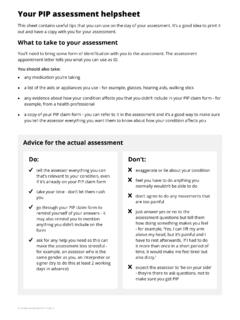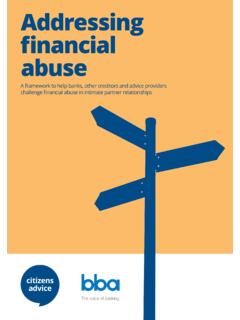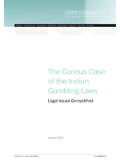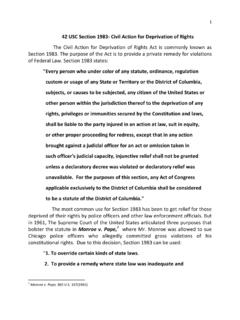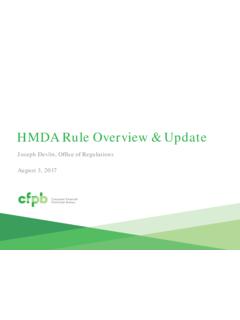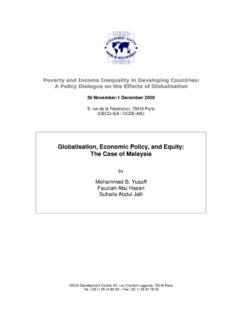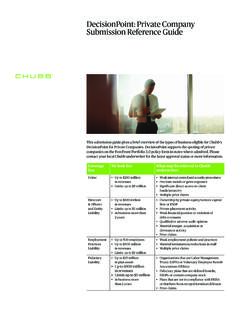Transcription of Shared ownership leases - Citizens Advice
1 ,%!3%4(% ,%!3%(/,$!$6)3/29 3%26)#% Shared ownership leases What is Shared ownership leasehold and how does it work?Contents,%!3%4(% ,%!3%(/,$!$6)3/29 3%26)#%Purpose of this booklet ..3 What is leasehold? ..3 What is a Shared ownership lease? ..3 What are the differences between a Shared ownership lease and an ordinary long residential lease? ..4 Useful links ..7 Useful addresses ..82 Purpose of this Advice noteThe purpose of this Advice note is to provide a brief overview of Shared ownership lease for owners/purchasers and property professionals. The Department for Communities and Local Government maintain detailed information on Shared ownership leases on their website. Housing associations will also maintain useful information for purchasers and owners of Shared ownership leasehold is leasehold?
2 Leasehold ownership of a flat or house is simply a long tenancy, the right to occupation and use of the flat or house for a long period the term of the lease. This will usually be for 99 or 125 years and the flat or house can be bought and sold during that term. The term is fixed at the beginning and so decreases in length year by year. Thus, if it were not for inflation, the value of the flat or house would diminish over time until the eventual expiry of the lease, when the flat returns to the landlord (although an assured tenancy would then become a possibility).The leasehold ownership of a flat usually relates to everything within the four walls of the flat, including floorboards and plaster to walls and ceiling, but does not usually include the external or structural walls. The structure and common parts of the building and the land it stands on are usually owned by the freeholder, who is also the landlord.
3 The freeholder is responsible for the maintenance and repair of the building. The costs for doing so are recoverable through the service charges and billed to the leaseholders. A leasehold ownership of a house usually relates to the whole building both internal and external and possibly a garden and driveway. Typically a leaseholder of a house would be responsible for the repair and maintenance of the whole landlord can be a person or a company, including a local authority or a housing association. What is a Shared ownership lease?In addition to the usual leasehold property there is a form of leasehold property referred to as a Shared ownership lease where the leaseholder can purchase a share of a property (house or flat) and pay rent on that part of the property retained by the landlord.
4 The leaseholder will have a right to purchase additional shares in the property until they own 100% of the equity . At this point the property is no longer a Shared ownership property. Most Shared ownership leasehold properties are granted by housing associations as part of their home ownership programme. Such leases are almost always in a format approved by the Homes and Communities Agency (HCA, formerly the Housing Corporation). The intention is to provide a first step into home ownership for those who are currently renting and cannot afford to purchase a home at the full market value. The purchaser will generally be either an existing housing association tenant, on a housing or local authority housing list, or a key public sector worker. Until recently only housing associations granted Shared ownership leases and local authorities granted a form of Shared ownership lease referred to as a rent to mortgage property.
5 private developers are now able to grant Shared ownership leases . We are aware of private developers selling what they refer to as Shared equity leases . These are more like the key worker home buy schemes administered by the HCA, which is actually a form of second mortgage secured against the property where no repayments are made until the property is are the differences between a Shared ownership lease and an ordinary long residential lease?Local authorities no longer offer rent to mortgage properties, although there are still a number of such properties. We will deal with rent to mortgage properties at the end of this guidance as there is an important difference between them and the HCA approved Shared ownership are a number of important differences between a Shared ownership lease and other residential leases ; the most important are listed below:1.
6 A Shared ownership lease is not regarded as a long residential lease for the purposes of exercising a statutory collective right to purchase the freehold of a building containing flats (see Section 7(1) (d) Leasehold Reform Housing and Urban Development Act 1993).2. A Shared ownership lease is not regarded as a long residential lease for the purposes of exercising a statutory collective right to manage a building containing flats (see Section 76 (2) (e) Commonhold and Leasehold Reform Act 2002).3. A Shared ownership lease of a house does not qualify for the right to purchase the freehold under the provisions of the Leasehold Reform Act 1967 if there is a provision in the lease for the freehold to be transferred on the purchase by the leaseholder of the remaining share in the property (referred to as the final staircasing).
7 Other exemptions apply if the leasehold house was provided for the elderly or within a designated area referred to as a protected area. (see Schedule 4A Leasehold Reform Act 1967).4. As rent is paid on that part of the equity not owned by the lease- holder, a landlord can take action to repossess the property for rent arrears in the county court in the same way that a landlord of an assured shorthold tenancy can under the provisions of the Housing Act 1988. If the property is repossessed in these circumstances no compensation is payable to the leaseholder to take into account the balance, between the leaseholder s debt and the market value of the leaseholder's share in the HCA approved Shared ownership leases must contain eight core clauses. They are listed below: a) Restrictions on Sales and Prohibition on Subletting (Alienation Clauses): HCA approved Shared ownership leases do not allow subletting in any circumstances.
8 Under a Shared ownership lease the landlord nominates a purchaser and the purchase price is determined by an independent surveyor appointed by the landlord. Some versions of Shared ownership leases provide that the landlord has a right of pre-emption (right of first refusal) if the property is sold, even though the leaseholder may have purchased 100% of the property under the staircasing provisions of the lease. b) Rent Review Clause: In buying a proportion of the equity in a property the owner of a Shared ownership lease must pay rent on that share of the property retained by the landlord. The lease will have an initial rent, usually based on a sum equivalent to 3% of the outstanding equity retained by the landlord. The rent increases annually in line with increases to the Retail Price Index (RPI), plus an amount, typically ranging between and 2%.
9 4 Example: Market value of the property on first purchase = 250,000 Initial share purchased by leaseholder 25% = 62,500 Share retained by the landlord 75% = 187,500 Market rent @3% of market value of property = 7,500 per year = 625 per month Initial rent @ 3% of outstanding equity = 5,625 per year = per month Assuming the RPI increases in the following year by and the lease allows for an increase by reference to the upward movement of the RPI plus 2%, then the rent paid by the leaseholder will increase by to 5, per annum ( per month). If the leaseholder purchases additional shares in the property, the rent paid will reduce proportionally until 100% is acquired and no rent is payable. c) Service Charge Clause: All Shared ownership leases must contain a clause providing for the payment of a service charge.
10 In the case of Shared ownership flats this will be in the same terms as any other lease of a flat. The Shared ownership leaseholder needs to be aware that they will pay the full service charge and not a proportion in accordance with their equity share. Where there is a Shared ownership lease of a house, the leaseholder will be responsible for maintaining and repairing the property and the only service charge payable will be in respect of buildings insurance. There is an exception to this general rule where a leasehold house is located on a private estate; in this case a service charge may be payable for the maintenance of the common parts of the estate such as pathways, private roads and other amenity areas. An obligation to pay towards these costs would typically continue if the leaseholder acquired the freehold of the house.



